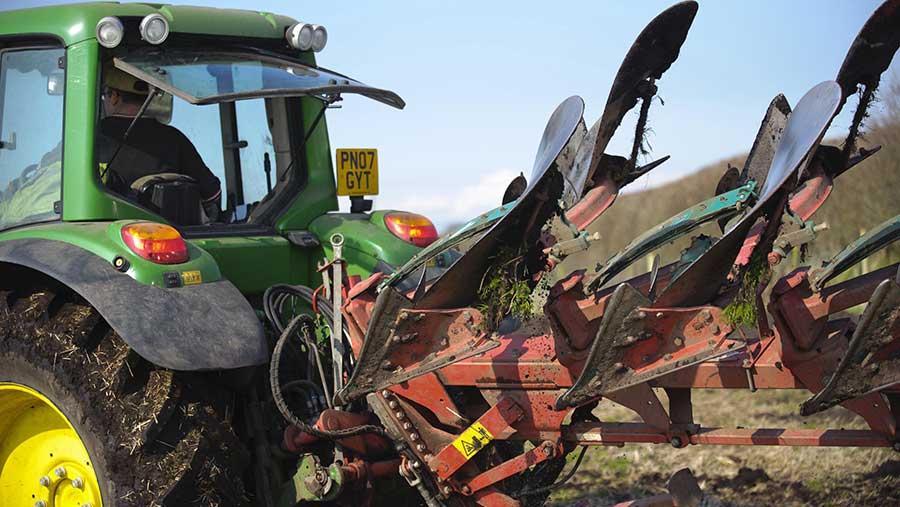9 steps to getting a spring reseed right

Livestock farmers targeting higher grass production and use/ha should consider spring drilling over autumn drilling, according to a leading grassland adviser.
Dr Noel Gowan of Grasstec says that when post-sowing management is optimised, spring reseeds can be seedhead and stem free for seven to eight grazings.
Autumn reseeds typically show stem and seedhead after two to three grazings.
Dr Gowan says that autumn reseeding makes sense when in rotations with other crops but otherwise spring reseeding is best.
Although autumn reseeds take grassland out of the platform at times when growth is lower than demand, spring reseeding typically results in better-quality pasture.
This is because an April reseed could see far more grazings than an August reseed before land becomes wet, he explained.
See also: What is the ideal DM to milk solids ratio to survive price volatility?
He says farmers should factor in a rest period of 75-80 days between reseeding and grazing, including waiting 10-12 days after swards have been sprayed off at the start of the process.
He outlines nine key steps for farmers who want to maximise their reseeding, a process that AHDB Dairy said can cost £400-£700/ha.
1. Soil test
Slurry can add 3-5 units of N but it is a strong source of phosphorous and potassium and volumes depend on the soil analysis.
Typically, 1000 gallons/acre equates to 10:6:30/acre or 12:7:37kg/ha.
Spread a P and K compound after soil testing, but delay nitrogen until you see green to take up the nitrogen.
2. Spray off old sward
Ideally allow 10-12 days between spraying off grass and sowing. Old permanent pastures particularly benefit from this because you want to kill old grass weeds and grasses to allow room for new perennial ryegress.
3. Grazing tightly or mowing
Remove as much material from the old sward as possible by either grazing tightly or mowing (see step 9).
4. Apply lime
Following soil sampling, if pH levels need it. Target is 6-6.5.
5. Choose your grasses
Hybrids and Italian ryregrasses have more of a role in silaging swards, but perennial ryegrasses will better suit grazing pasture.
You must ask yourself what the field is primarily for. Diploid grasses will create denser swards but tetraploids tend to have a higher D-value and are more palatable.
Plan for 30-35kg of seed/ha and, if using a lot of tetraploid, aim for 35kg. No more than 3-4 varieties will be needed – keep it simple.
6. Cultivate to fine, firm level seedbed and sow
Ploughing achieves the best results but discing followed by a one-pass machine is as good as ploughing – don’t plough too deep (20-22cm maximum, generally).
When sowing keep coulters high (6-7cm above the soil) to scatter seed, rather than sowing it in lines, to cover the ground and help tillering.
7. Fertilise
Apply nitrogen only once green cover is visible and then after each grazing, but at a lower rate than the remaining grazing area. Spread two-thirds of the rate you use on your farm.
8. Roll and post-sowing management
Monitor weed burden. Some weeds can be grazed off and select suitable weed killers to spray off at a narrow window when grass is at the two-to-three leaf stage.
You must protect the sward in its first year. Do not allow space for weeds to get into the sward. Be careful of grazing too late in the autumn, particularly with sheep, as it could compromise regrowth.
9. Grazing management
First grazing at 2,200-2,500kgDM/ha (6-7cm) and graze to 3.5cm. Subsequent grazings should start at 2,500kg-2,900kgDM/ha and graze to 3.5-4cm.
Never let a heavy cover build and expect rotations to be down to 15-16 days in high growth periods.
Target 6,000 tillers/sq m or more to minimise weeds and set up sward for a productive life.
4 top tips for maximising your reseeds
- Never let a heavy cover build – graze canopies hard to allow sunlight on daughter tillers (graze from 6-7cm down to 3.5cm)
- Use less nitrogen in the first year – too much nitrogen can turn stock off grazing grass, use two-thirds the normal amount for your farm
- Delay nitrogen spreading – wait until you see a green cover after reseeding before applying nitrogen
- Perennial ryegrass is best – this grass achieves 25% more nitrogen uptake and provides both yield and digestibility
